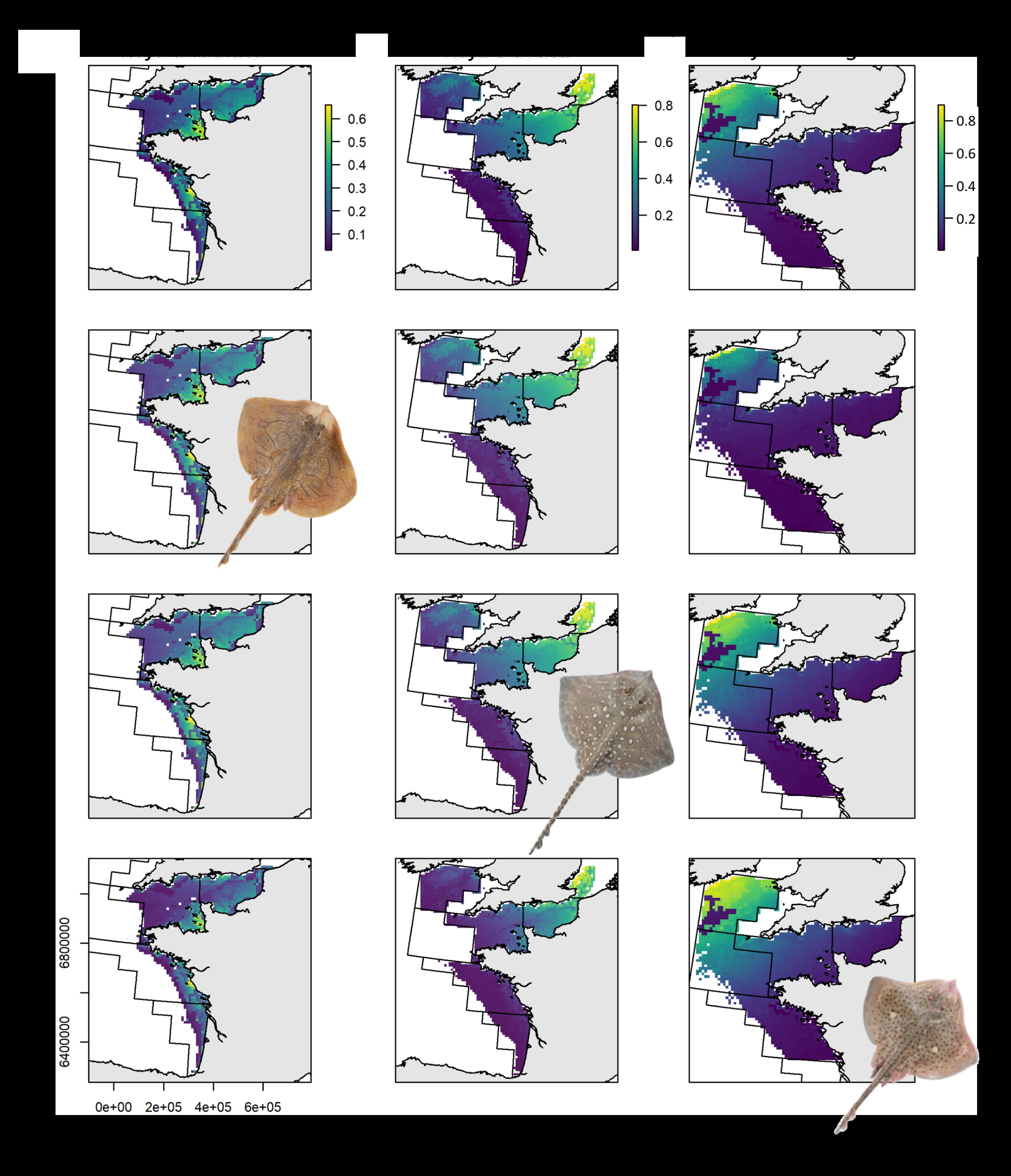Distribution and life history trait models indicate vulnerability of skates
Distribution and life history trait models indicate vulnerability of skates
Elliott, S.A.M., Carpentier, A., Feunteun, E., Trancart, T., 2020. Distribution and life history trait models indicate vulnerability of skates. Prog. Oceanogr. 181, 102256. https://doi.org/10.1016/j.pocean.2019.102256
Elasmobranchs are k-strategy species with low reproduction rate and slow growth lending to increased anthropogenic vulnerability. Specific management measures to improve the conservation of elasmobranchs can be problematic due to insufficient information on their biology and ecology. Here, three sympatric skates occupying north-eastern Atlantic waters, which have differing conservation status were studied within ICES divisions 4.c, 7.d–e, 7.f–h and 8a–b and d. Fisheries-dependent data on skate bycatch and a series of environmental variables were used to model spatio-temporal differences in habitat use between the three species.
Raja undulata, the undulate ray (IUCN red listed as ‘Endangered’) was observed to have a coastal distribution within the English Channel and the Bay of Biscay (ICES division 7.d–e and 8.a–b). Raja clavata, the thornback ray (‘Near threatened’), had a broader distribution with higher presence in the eastern English Channel and the southern North Sea (ICES division 7.e and 4.c). Raja montagui, the spotted ray’s probability of presence (‘Least concerned’) was higher off the coast of southern Ireland (ICES division 7.g). Seasonal and life-history trait differences were also observed. From the fisheries-dependent data, wider skate distributions than previously studied were modelled.
Although the species do co-occur, spatio-temporal differences between these species were observed. This study contributes to a greater understanding of skate habitat during their different life history stages, and indicates reasons for R. undulata’s increased vulnerability than R. clavata and R. montagui. Information from the distribution models could be used for specific spatio-temporal management measures. Better understanding of the distribution of species can also help reduce bycatch of protected species such as R. undulata.
BOREA contact: Sophie Elliott, sophie_elliott@yahoo.com

